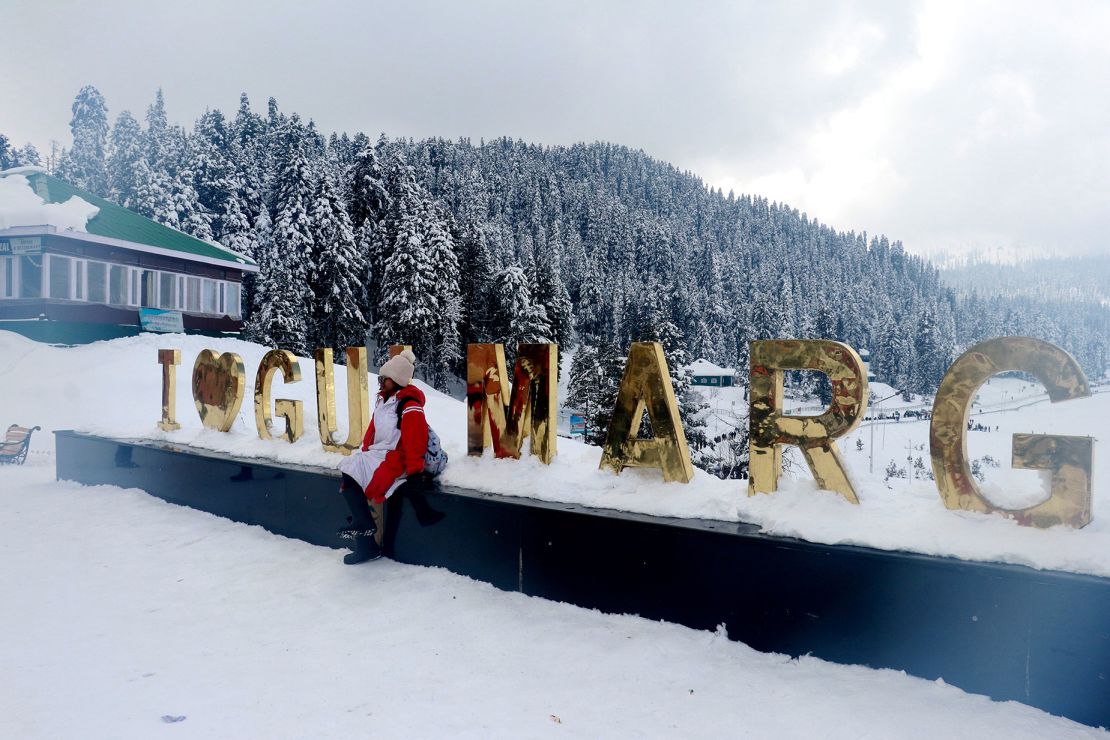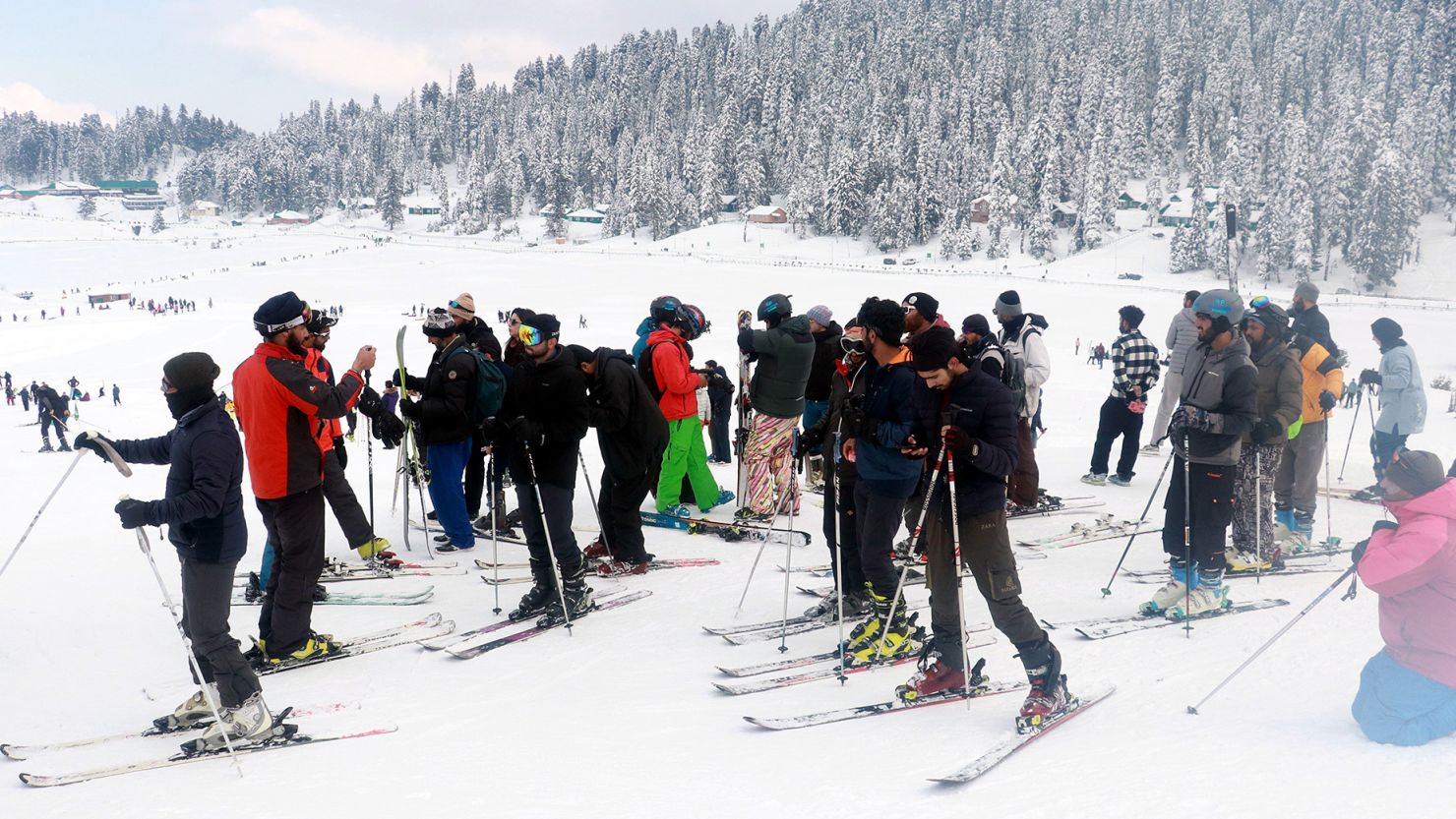In early January, anyone who visited the ski resort village of Gulmarg in Indian-administered Kashmir with hopes of actually skiing was out of luck.
A severe snow shortage, blamed on dry weather, threatened to derail the entire winter season, leaving both travelers and tourism operators disappointed.
Multiple climate experts based in India have since raised alarms over the lack of snow, saying it was a direct cause of the climate crisis and the El Nino weather pattern.
“Although there is no one-to-one relationship between deficit precipitation and El Nino, the changes in global atmospheric circulation and the persistence of the El Nino has resulted in less snow,” Indian-administered Kashmir’s meteorological director Mukhtar Ahmad told The Hindu, one of India’s largest English-language newspapers.
“But it is seen that, on many occasions during the El Nino years, there is deficit precipitation.”
Thankfully, Gulmarg’s fortunes have since changed, with recent weeks bringing some much-needed flurries of powder to the slopes of Mount Apharwat.
And just in time; the ski resort, one of the highest in the world, is set to host ski and snowboard events during the fourth edition of the Khelo India National Winter Games 2024 from February 21.
Regardless of whether you’re a full-time athlete or someone who enjoys skiing and snowboarding for fun, Gulmarg offers a winter experience like no other.
With a name that means “meadow of flowers,” it was already a popular summer destination when it was first established as a ski club in 1927 by the British Raj, which ruled India from 1858 to 1947.
Today, travelers headed for Asia’s highest ski resort can enjoy over 1,330 vertical meters (4,363 feet) of skiable terrain, with lifts offering access to four separate skiing zones on Mount Apharwat. Its biggest claim to fame is the Gulmarg Gondola, which ascends to an elevation of 3,980 meters (13,057 feet) and is among the highest gondolas in the world.
“The gondola takes guests to the Karakoram Range of the Himalayas from which, on a clear day, one can see the peaks of Nanga Parbat,” says Brian Newman, a contracted snow-safety officer from Colorado, referring to the world’s ninth-highest mountain.
“You don’t see peaks that high in other places of the world.”
The American, who speaks fluent Kashmiri, has spent more than a dozen winters in Gulmarg working alongside his trained ski patrol to mitigate avalanche risks.
A memorable cultural experience
When it comes to local ski culture, Newman says visitors should bear in mind their experience might be quite different from what they’re accustomed to on the slopes in Europe or North America.
“I deal with the high adventure skier who is used to wild terrain but this is not a typical Western top-class ski village as it is driven by government regulations,” he points out.
“Guests have to seek out comprehensive services for families and kids, and alcohol is not freely available so après ski activities, typical in the West, are non-existent. But visitors come here for the cultural experience which is worthwhile and memorable.”
Mehmood Ahmad Lone, who works closely with Newman, operates the Gulmarg Adventure Academy and K-Line Adventures, which help tourists navigate all things snow-related.

According to him, the best time to visit is January/February when the mountain gets an average of two meters (seven feet) of snow. For those in need of ski or snowboard coaching, Lone’s outfit provides professional instructors at a cost of about $36 to $121 per day depending on certifications and experience.
Lone has several suggestions for travelers in search of varied terrain in Gulmarg.
“Some of the longest runs are Drang and Khilanmarg, that can take a good part of the day,” he says.
“Khilarmang involves hiking to a frozen lake and skiing through the army camp all the way down to the base to the Gujjar huts, the summer residence of shepherds. In addition, Shaggy’s Face and Transtorial Ridge are steep runs.”
Gulmarg’s backcountry runs are particularly spectacular and usually bereft of people, the vast azure skies and untouched powder punctuated only with the sounds of the Himalayan woodpecker. Occasionally, skiers may come across a black bear, fox or snow leopard but a sighting is considered lucky.
However, the area does witness avalanches. Those planning to head off-piste should visit Newman’s website first, and he recommends using guides, which cost about $100/day for a party of three.
Around the mountain
For sustenance, travelers can head to the mountain’s middle station – also called Phase 1 or Kongdoor – where the Kolahoi restaurant offers a daily Indian lunch buffet replete with tandoori nans, Kashmiri pulao, Kababs and Rogan Josh. Lighter fare like Kati rolls and sandwiches are available too.
It’s also a great spot to take in the mountain’s deodar cedar trees. With their pendulous branches, these beauties can reach a height of about 75 meters (250 feet). Native to the Himalayas, their name, translated from Sanskrit, means “timber of the gods.”
Meanwhile, the top of the mountain is home to the Northwind Café. Vendors, dressed in their native phiran, sell chocolates, coffee and Kava, a Kashmiri tea that’s spiced with saffron, almond, cardamom and cinnamon.
In terms of accommodations, Khyber is the top high-end hotel in Gulmarg, while quality mid-price options include Highland Park, Hilltop and Kolahoi Green.
Isn’t the area dangerous?
Gulmarg sits about 50 kilometers from Indian-administered Kashmir’s largest city, Srinagar, and 20 kilometers from the Line of Control” (LoC), the de facto border that divides this disputed region between India and Pakistan.
Due to the region’s sensitive geopolitical landscape, multiple governments, including the US Department of State, advise citizens not to visit.
“Sporadic violence occurs particularly along the Line of Control (LOC) separating India and Pakistan, and in tourist destinations in the Kashmir Valley: Srinagar, Gulmarg and Pahalgan,” says the US government’s India Travel Advice.
Indeed, there is a heavy military presence in the area that likely won’t go unnoticed by visitors. Mount Apharwat is also used as the training ground for the Indian army’s High-Altitude Warfare School.
“Since I have been here there have been no incidents of terrorism in Gulmarg,” says Lieutenant Colonel Mirza Zahid Baig, who has been at the center since 2022, assisting with avalanche rescues and training cadets in skiing and mountaineering.

“The interest of the local people is tourism and they will not support such activity.”
Gulmarg’s reputation as a high-altitude ski destination is certainly growing. According to various media reports citing government officials, it welcomed a record-high 1.65 million tourists in 2023, most of which were domestic travelers.
Many of those visitors don’t ski but just ride up the gondola to play in the snow and take in the views at the top. Though this is good for the local economy, the deluge is negatively impacting the area’s ecology, cautions Javedh Ahmad Reshi, a local ski guide.
“Like ski areas around the world, we too are getting less annual snowfall which is a sign of global warming,” says Reshi.
“And the year-round influx of tourists is not helping as they pollute the mountain. The government needs to put measures in place to protect the mountain.”



